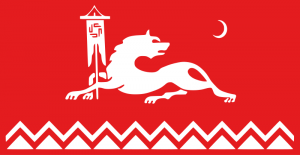Language/Avaric/Grammar/How-to-Use-Be
Hi Avaric learners! 😊
In this lesson, we will explore the uses of the verb "to be" in Avaric grammar. Understanding how to use this verb correctly is essential for speaking and writing correctly in Avaric. We will go over the various forms of "be" and when to use them. Additionally, we will provide examples of "be" in context to illustrate how it functions in sentences. Finally, we will offer some cultural and historical information on the Avaric-speaking people.
The verb "to be" in Avaric
In Avaric, the verb "to be" is expressed through inflection. There are three main forms of the verb: "en", "ez", and "lez". Each of these forms aligns with a different grammatical context.
Present tense
In the present tense, the verb "to be" is expressed through the form "en".
- Example:
| Avaric | IPA | English Translation |
| Хьай ма фахьи? | xˤaj ma faw.i? | "Are you hungry?" |
Here, "en" indicates that the subject of the sentence is in a state of hunger.
Immediate past
In the immediate past, the verb "to be" is expressed through the form "ez".
- Example:
| Avaric | IPA | English Translation |
| МагIали ез душ | mag’al-i ez duʃ | "I was sleeping" |
"ez" indicates that the subject was sleeping for a completed duration in the past.
Future tense
In the future tense, the verb "to be" is expressed through the form "lez".
- Example:
| Avaric | IPA | English Translation |
| Пан елез хьо вылурайн | pan e-lez xˤo vəlu.rayn | "We will be traveling tomorrow" |
"lez" signals that the subject will be in a state of traveling in the future.
Contextualizing "be" in Avaric
To understand how "be" functions in sentences, let’s see it in context:
Person 1: Бахьларас ши янагак1? (bax’lar-as ši janagak?) (Do you like apples?)
Person 2: Ен, янагак бахьйес ХьалвачIахь. (en janagak bax’jes xalwač’ax.) (No, I don’t like apples.) (en - negative particle)
Here, "en" functions to indicate that the subject does not like apples.
Cultural Information
The Avaric-speaking people are an ethnic group that primarily inhabit northeastern Caucasus. The majority of Avaric speakers are found in Dagestan, one of the regions of Russia. The Avaric language has about 1 million speakers worldwide. The language is a member of the Nakh-Dagestanian language family, which includes various other languages spoken in the Caucasus region. Historically, the Avars were a nomadic people who occupied territories ranging from present-day Turkey to Iran.
If you want to learn more about Avaric Avaric, visit Polyglot Club. You can also find native speakers and ask them any questions!
➡ If you have any questions, please ask them in the comments section below.
➡ Feel free to edit this wiki page if you think it can be improved. 😎

